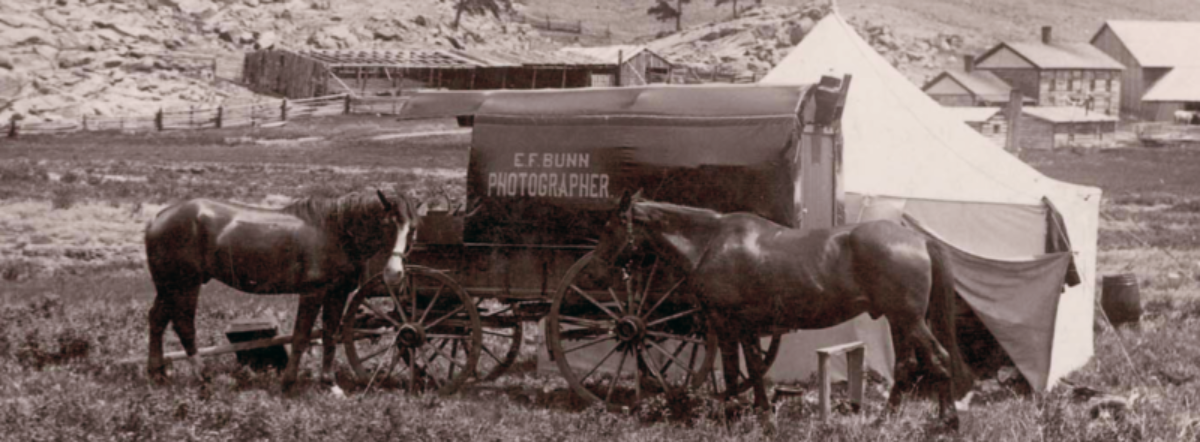
Wilson’s Photographic Magazine (Dec. 1900, p. 548) outlines the steps to “fake” the negative: “…take Chinese white, as sold in tubes by the artists’ colormen, and thin it with water on a palette; then take an ordinary toothbrush and touch the ends of the bristles on the palette so as to take up a little of the pigment…pass, say, the back of the knife across the bristles so as to flick the color on to the negative in fine particles. Before doing this it is desirable to varnish the negative, as then, if the result is not satisfactory, the pigment can be cleaned off.” Notice that the photographer carefully avoided getting “snow” on the customer’s face.
During the 19th century, photographers often posed their clients in front of painted backdrops and used studio props, such as columns and plaster tree stumps, to add interest. To make their snow scene more realistic, the Dalgleish Bros. retouched the background areas of the negative, adding snow to the foreground, rocks and roof of the building. By adding pigment to these areas on the negative, consequently blocking light from exposing the photographic paper, the snow appears white in the final print.

Born in Scotland, the Dalgleish Bros., George and Thomas, operated photography studios in Wyoming and Colorado. George (1854-1933), the better known of the two, learned photography in Toronto, Canada. Between 1886 and 1889, the brothers worked in Sheridan and Buffalo, Wyoming. They offered portraits made in the latest styles and also copied old photographs.
In 1889 the brothers opened a third gallery in Georgetown, Colorado. Georgetown, surrounded by high mountains, prospered as a mining town in the 1870s. Located about forty-five miles west of Denver, George Dalgleish managed mining claims in addition to managing his photography business. After 1890, George seems to be operating independently from his brother. He continued his photography business in Georgetown for about two decades. I was unable to find additional information about Thomas Dalgleish.

While the Dalgleish studio produced the popular cabinet card portraits, they also made outdoor views including landscapes, mining scenes, and documented local events.

In 1898 George Dalgleish organized the Georgetown Camera Club. The Georgetown Courier (Nov. 5, 1898, p4, c2) reported that the club would promote the “general advancement and mutual improvement in photography, and exchange of ideas with other camera clubs, through the exchange of slides and photographs.”

In February 1899, George Dalgleish photographed the aftermath of an avalanche that brought snow, rocks and trees down the steep hillside of the neighboring mining community of Silver Plume. Cabins, some occupied by mining families, were overwhelmed by the snow’s impact and about two dozen people lost their lives. Dalgleish’s photographs received national attention when they were published in Leslie’s Illustrated Weekly.
The local press covered Dalgleish’s mining activity in great detail in the early 1900s. Initial reports were very promising. But in 1911, he sold all his claims and moved his family to Sterling, Colorado, on the eastern plains in northeast corner of the state. He continued his photography business in Sterling until shortly before his death on May 13, 1933.
Now back to Thomas Dalgleish. There was a Thomas Dalgleish active as a photographer in Texas in the early 1880s. I suspect he was George’s brother, but I have no proof. If anyone has additional information about the Dalgleish brothers that they would like to share, please let me know.
Want to see more photographs by George Dalgleish? The Denver Public Library has a selection of Dalgleish’s photographs




